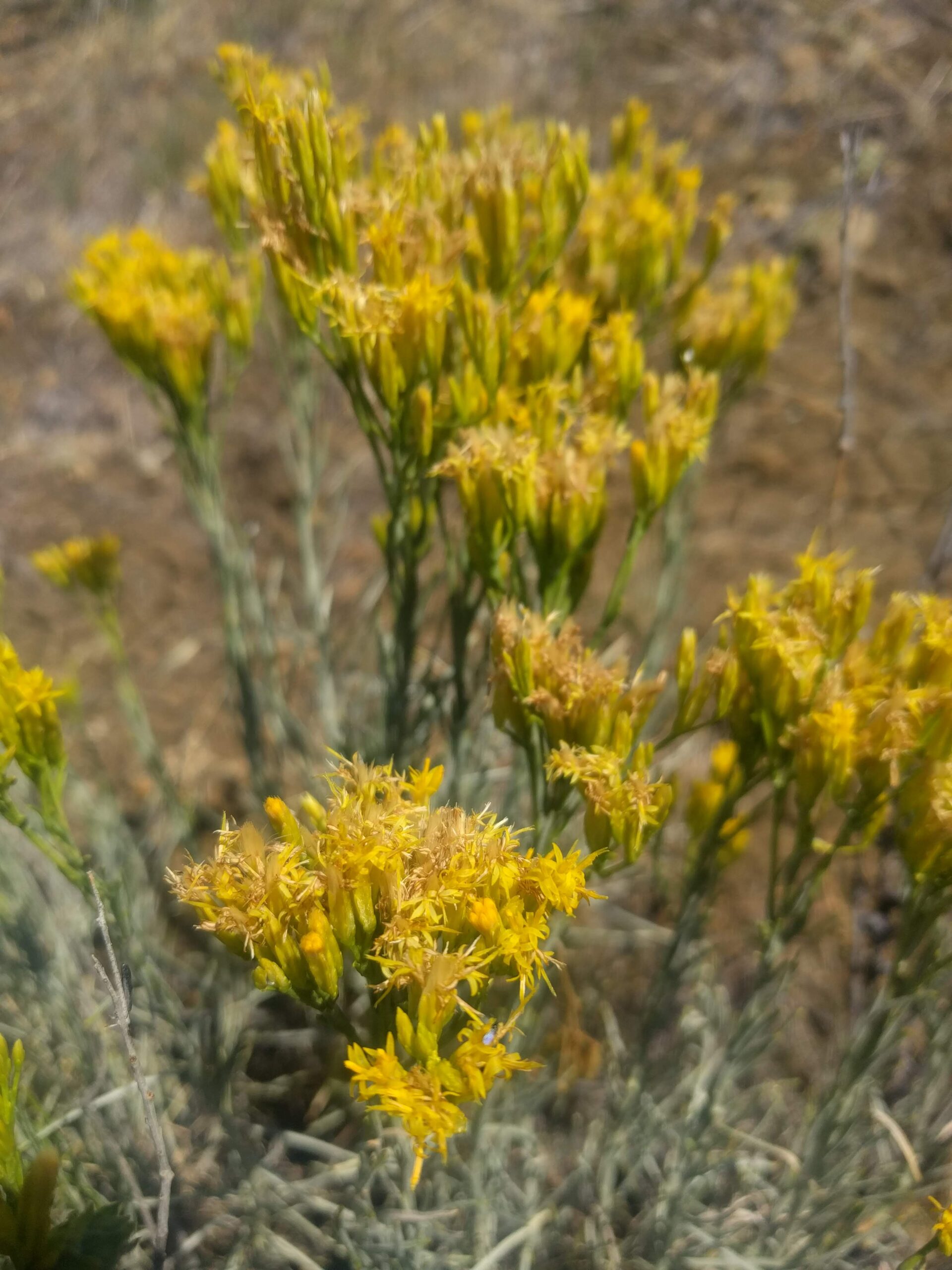Rubber Rabbitbrush (Ericameria nauseosa) is a small perennial shrub that grows in a wide variety of harsh habitats from the west coast all the way to Texas and North Dakota. In the Southern Cascades you can still see the last of its flowers in November, but it’s prime flowering season is August-October. It’s bright and prolific yellow flowers are a very abundant source of food for pollinating insects and birds, and the leaves are an important winter food for browsing mammals.
Rubber Rabbitbrush is an excellent revegetation plant in disturbed areas, as it propagates easily and grows fast in a range of poor soil conditions. It also thrives in dry environments, making it a great choice for xeriscaping (landscapes designed to reduce or eliminate the need for irrigation). It is often found growing in desert-like habitats alongside sagebrush – both of which are in the Asteraceae (sunflower) family. It’s deep growing roots also make it very useful for stabilizing ground prone to erosion or damaged by mining.
Ethnobotanical uses of the plant include making a yellow dye from the flowers, using the rubbery stems in basket making, and making tea and chewing gum. As its name suggests, it can actually be used to make rubber from the plant’s sap. Rubber production potential varies depending on the growing conditions, but it is known to produce more rubbery sap in dryer, hotter conditions.
Taxonomy fact: the “nauseosa” species name relates to the pungent smell the plant gives off when the leaves are rubbed. Some say it’s a pineapple-like aroma, while it’s more foul and rubbery to others.
Written by Lilia Letsch, Rogue Native Plant Partnership

